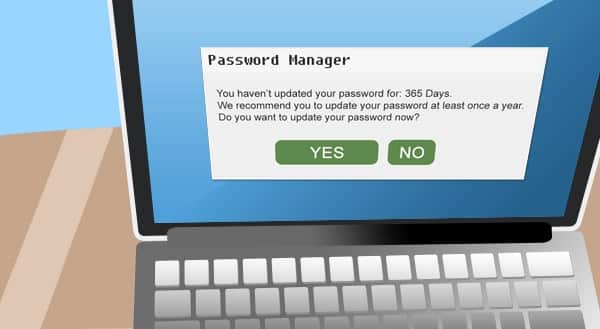Don’t Get Hooked by Spear Phishing Attacks
Phishing attacks have been around for a long time in IT. Designed to steal your credentials or trick you into installing malicious software, they have persisted in the IT world precisely because they have been so devastatingly simple and effective. Today, a more modern and more effective version of the same attack is commonly used.
 A typical phishing attack involves an attacker sending out a malicious email to hundreds of thousands, if not millions of users. The attacker’s email is designed to look like it comes from a bank, financial service, or even the tax office. Often aiming to trick you into logging in to a fake online service, a phishing attack captures the login details you enter so an attacker may use them to enter the genuine service later.
A typical phishing attack involves an attacker sending out a malicious email to hundreds of thousands, if not millions of users. The attacker’s email is designed to look like it comes from a bank, financial service, or even the tax office. Often aiming to trick you into logging in to a fake online service, a phishing attack captures the login details you enter so an attacker may use them to enter the genuine service later.
By sending out tens of thousands of emails at a time, attackers can guarantee that even if only one half of one percent of people fall for it, there is a lot of profit to be made by draining accounts. Spear phishing is a more modern, more sophisticated, and far more dangerous form of the attack. It’s typically targeted at businesses and their staff.
A Convincing, Dangerous Attack
While a traditional phishing attack throws out a broad net in the hope of capturing as many credentials as possible, spear phishing is targeted and precise. The attack is aimed towards convincing a single business, department, or individual that a fraudulent email or website is genuine.
The attacker focuses on building a relationship and establishing trust with the target. By building trust and convincing the target that they are who they are pretending to be, the user is more likely to open attachments, follow links, or provide sensitive details.
Consider how many times you have followed a link or opened an attachment just because it has come from a contact you have trusted before.
A Trusted E-mail
The malicious email can appear to come from a vendor you deal with regularly. It may even look like an invoice you are expecting to receive. Often attackers can simply substitute the vendors’ banking details for their own, hoping the target will not notice the difference.
Such an attack is very difficult to detect. It takes a keen eye, strong working knowledge, and constant awareness to keep your company protected. Even a single small mistake by an unaware member of staff can compromise your business accounts.
Defending Your Business
The key to stopping a spear phishing attack is education. Learning attack techniques, and how to protect against them is the single biggest thing you can do to enhance business security.
Whenever you deal with a vendor in a business transaction, you should always consider important questions before proceeding. Are you expecting this email? Is the vendor attempting to rush you into a quick decision or transaction? Have you checked all the details are correct and as you expected? Sometimes a simple query to the vendor can protect you against worst-case scenarios.
In many cases, a phishing attack can be halted in its tracks with a strong IT security package. Web filtering prevents malicious emails and links from entering the network, shutting attacks down before any damage can be done.
Good Security Practice
As with many types of IT threat, good security practices help mitigate damage. Locking down security to ensure employees only access the systems they need helps to prevent damage spreading across the network.
Enforcing unique and strong passwords prevents leaked credentials from affecting systems related to the one that has been compromised. Getting employees set up with a password manager and good security policies can do the world of good to boost your security to the level it needs to be.
Give us a call at (416) 645-2469, (905) 667-0441 or email us to audit your security practices. It could be the difference that secures your firm against sophisticated spear phishing attacks.



 Hackers today have many ways to attack small businesses and business owners. Many attempt to use technology to send malware, viruses, or phishing attacks; or use information to con owners and employees into handing over more information than they should.
Hackers today have many ways to attack small businesses and business owners. Many attempt to use technology to send malware, viruses, or phishing attacks; or use information to con owners and employees into handing over more information than they should.
 We often tend to be creatures of habit, particularly when it comes to technology. Passwords are a prime example. Many of us use the same logins for multiple websites and applications because we don’t have a photographic memory. A large percentage of users aren’t aware that this is one of the most significant security dangers they can face online. It has a simple fix too.
We often tend to be creatures of habit, particularly when it comes to technology. Passwords are a prime example. Many of us use the same logins for multiple websites and applications because we don’t have a photographic memory. A large percentage of users aren’t aware that this is one of the most significant security dangers they can face online. It has a simple fix too.
 The start of a new year is a challenging time for businesses. It can be a good time to reflect on the wins and losses of the previous twelve months. It’s also an excellent time to take stock and evaluate what your business needs to go forward.
The start of a new year is a challenging time for businesses. It can be a good time to reflect on the wins and losses of the previous twelve months. It’s also an excellent time to take stock and evaluate what your business needs to go forward.
 Like many valuable things we buy, new computers suffer from wear and tear over time. Our computers are particularly vulnerable as we have placed more and more demands on them every year. New machines have got faster, quieter, more reliable, and more capable over time. At the same time our own computers have begun to slow and sometimes even stop performing altogether.
Like many valuable things we buy, new computers suffer from wear and tear over time. Our computers are particularly vulnerable as we have placed more and more demands on them every year. New machines have got faster, quieter, more reliable, and more capable over time. At the same time our own computers have begun to slow and sometimes even stop performing altogether.
 Most of us can admit that we have lost track of time during the workday on occasion. Sometimes time can get away from you, particularly when you’re busy. Often you can be running late before you know it and wondering where the day has gone.
Most of us can admit that we have lost track of time during the workday on occasion. Sometimes time can get away from you, particularly when you’re busy. Often you can be running late before you know it and wondering where the day has gone.
 Being engaged in business used to mean staying wired in at the office eight to twelve hours a day. In the modern day, this is completely untrue. Often the most efficient workplace is spread far and wide and always on the go.
Being engaged in business used to mean staying wired in at the office eight to twelve hours a day. In the modern day, this is completely untrue. Often the most efficient workplace is spread far and wide and always on the go.
 A single click can be the difference between maintaining data security and suffering massive financial losses. From the moment just one employee takes the bait in a phishing email, your business is vulnerable to data breaches and extensive downtime.
A single click can be the difference between maintaining data security and suffering massive financial losses. From the moment just one employee takes the bait in a phishing email, your business is vulnerable to data breaches and extensive downtime.